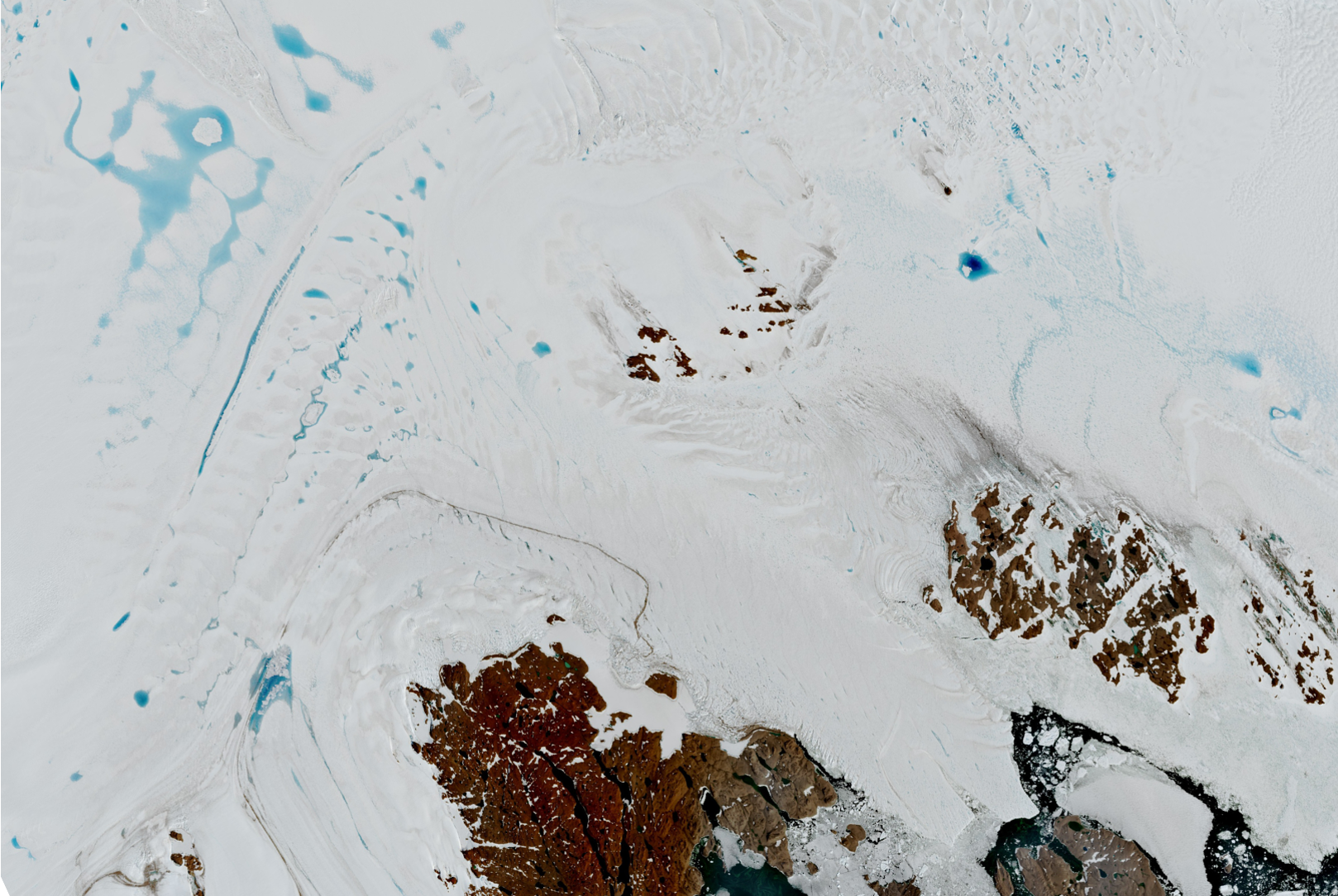Cold ice shelves Antarctica more vulnerable than previously thought
Some cold ice shelves in Antarctica, which researchers initially thought would remain stable over the coming centuries, turn out to be vulnerable in the event of further global warming. This conclusion results from a study led by Utrecht University and on which Stef Lhermitte and Bert Wouters from Delft University of Technology contributed. When ice shelves break up, they do not contribute to sea level rise, because they are already floating in the ocean. However, they buttress land ice that will flow faster into the ocean as a result of their breaking up, which does cause faster sea level rise. The results of the study will appear today in Nature Climate Change.
Size of Spain
The Ross ice shelf in Antarctica is about the size of Spain, making it the largest ice shelf in the world. It is a floating sheet of ice, which is hundreds of meters thick and fed by the ice on land. Although all of Antarctica's ice shelves are naturally cold, the average temperature on this ice shelf is even lower. Because of these cold conditions, climate scientists initially thought the Ross ice shelf and other similar ice shelves were safe from global warming over the next century.
Sea level rise
The new research shows that even these cold ice shelves need to be carefully monitored. Due to relatively little snowfall on cold ice shelves like Ross, the threshold for the formation of ponds of meltwater on these ice shelves appears to be much lower: up to ten degrees lower than on ice shelves where there is a relatively large amount of snowfall. This also closely matches Stef Lhermitte and Bert Wouters' analysis based on recent satellite images. ‘This analysis shows that there are already meltwater lakes in areas where the threshold value in the current climate has already been passed.’
The creation of ponds of meltwater on an ice shelf is bad news. When an ice shelf has cracks, water from the ponds can flow into the cracks. This can cause the ice shelf to break up in a short period of time. More than sixty percent of Antarctica's ice shelves, including Ross, have such cracks and thus could potentially disintegrate when meltwater ponds form. If that happens, the adjacent land ice could flow more rapidly into the ocean and raise sea levels.
Meltwater ponds on cold ice shelves like Ross begin to form at an average annual temperature of -15 degrees Celsius. According to the latest climate models, with average global warming those temperatures could be reached on the Ross ice shelf by the end of this century.
Simulating snowfall
There is enough land ice in Antarctica to raise global mean sea level by tens of meters. Ice shelf breakup is widely seen as a crucial but poorly understood process that largely determines how fast Antarctic ice will melt in the future. ‘What surprised me most is that the amount of snowfall strongly determines the threshold for the formation of meltwater ponds,’ says Van Wessem. ‘With my research, I was trying to improve predictions of melt, but now it turns out that snowfall plays a much bigger role than previously thought. As far as I am concerned, it is therefore just as important to improve the simulation of snowfall in Antarctica, so that the models we use to make predictions about the melting of the ice sheet and the sea level rise it produces become more accurate.’
Read the publication in Nature Climate Change. And view the pageflow for further explanation of the research. Still want to know more about Delft’s contribution to this research? Contact Dave Boomkens, press officer Energy Transition, at D.J.Boomkens@tudelft.nl / 06 34081461.
A golden age for earth observation
One of the most recent IPPC reports predicted an average sea level rise of 20 centimetres by 2050, but there is a lot of uncertainty in the figures, especially for the predictions towards the end of the century. One of the causes of this uncertainty is the fact that we do not yet know enough about the influence that the ice caps in Antarctica and Greenland will have on rising sea levels. ‘You might say they are sleeping giants,’ says Stef Lhermitte. ‘Currently, the question is to what extent and how quickly they will affect rising sea levels under the influence of climate change. At the moment, the effect varies according to the model you use. With my research, I’m attempting to introduce more clarity.’
Ice shelves, the part of the ice caps that protrude into the ocean, have an important role to play in this. ‘In itself, an ice shelf has no direct influence on the sea level, because it floats on top of it. The influence is indirect, because ice shelves keep the ice caps in place, so to speak, thereby delaying rises in sea level,’ says Lhermitte. ‘What we do know is that these ice shelves can disintegrate quickly, sometimes even in the space of several weeks. We’ve seen several examples of this in recent years on the Antarctic Peninsula. Small-scale processes are an important factor in this and can potentially have major consequences. By using satellite images, I’m attempting to understand how these small-scale processes interact with each other.’
Read more about the research by our scientists Stef Lhermitte and Bert Wouters.

